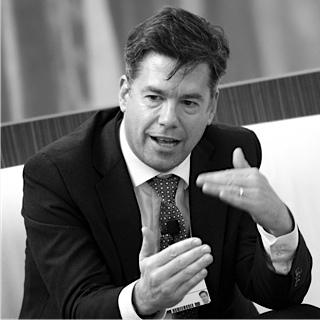
A new effort to eradicate slavery is showing success—and may provide a model for other complex human rights and social justice issues.
By Nick Grono | Sep. 30, 2014
Orginal article in the Stanford Social Innovation Review. Reproduced with permission.
Soni Devi was working in the fields around her Indian village in India when her eldest son, Mohan, suddenly disappeared. For three years, she had no idea where he was or what had happened to him.
Mohan had suffered the same cruel fate as thousands of other children in India every year. He had been trafficked—and in his case, forced to work in a bulb factory in Delhi and confined to the factory site.
Luckily, National Institute for Rural Development, Education, Social Upliftment and Health, a community partner of our Freedom Fund organization in India, identified, rescued, and returned Mohan and other trafficked children to their homes and families.
His story illustrates the increased determination and new resources dedicated to ending the scourge of slavery across the world, which in turn reflects growing global awareness of this crime.
This year has seen international attention focused on the abduction and threatened forced marriage of Nigerian girls by Boko Haram, and more recently of Iraqi Yazidi women and girls by ISIS. Qatar and the international football association FIFA are receiving unwelcome scrutiny over the use of forced labor on World Cup construction sites in Doha. And the US government has put Thailand on notice of possible sanctions over slavery in that country’s seafood industry.
In fact, the first Global Slavery Index last year estimated there are nearly 30 million people living in slavery. Modern slavery is not just enormous in scale but also very complex. Its victims include women and girls trapped in brothels in Thailand; children coerced to work as domestic servants in Haiti; Congolese men and boys forced to mine minerals that end up in Western electronics; and young Afghan girls sold in marriage to old men to settle tribal disputes.
Fortunately, we have seen positive developments in human rights philanthropy in recent years. Many philanthropists are far from scared off by the social and cultural complexity of problems such as child marriage, female genital mutilation, or slavery, as might once have been the case; there is now a real appetite to help drive efforts to end these abuses.
Yet current anti-slavery efforts are too often fragmented and uncoordinated. Funding remains woefully inadequate. There is a lack of rigorous evaluation of what works and what doesn’t.
Also, while international awareness and big ambitions are essential, those tackling slavery and other endemic human rights abuses need to better understand that if they want sustainable improvement, they must work at the local level, community by community. These crimes are most common in the remotest and most vulnerable communities, where the rule of law is weakest and where perpetrators often co-opt local elites. Tradition and custom frequently explain them away, which makes it vital to understand the local context and build good relationships with community leaders and the authorities. Funders need to establish strong partnerships with the grassroots organizations best equipped to tackle these crimes.
To be sure, identifying the most effective local community groups from offices in Washington, New York, or London is difficult. By their very nature, these groups are usually small in size and little known and can be distrustful of working with outsiders. They almost always lack the expertise or resources to evaluate outcomes, which donors rightly want to see.
To help overcome all these obstacles, last year three major philanthropic foundations established the Freedom Fund—the world’s first private donor fund dedicated to ending modern slavery. They have each committed $10 million dollars to encourage new donors to join the anti-slavery fight by delivering transparency, accountability, and impact. Our goal is to raise an additional $70 million by 2020 and channel these funds to the most effective anti-slavery interventions.
Our approach is to focus on hotspots—defined geographic regions with a high concentration of slavery—and target resources to local organizations closest to the problem. For example, Pragati Gramodyog Sansthan (PGS) is a local organization in an area of north India where slavery in stone-breaking goes back generations and affects hundreds of villages. PGS’s field staff includes several former slaves, and because they know exactly the constraints and fears of those in slavery, they can have the life-changing conversations that gradually allow families to access their rights and take practical steps that build toward sustainable freedom. They have created a powerful federation of former bonded laborers, and its public activities speak loud and clear to those still in slavery that freedom is possible.
Another example is the Mahila Development Center (MDC), which is working from within a red-light area of the state of Bihar, north India, to help young people develop skills that give them opportunities for a life outside of sexual exploitation. When women and girls are trafficked into the area, MDC supports them to take legal action, and helps them counter the stigma and violence they face daily.
We believe our model is an effective way to tackle slavery and is applicable beyond this particular crime. Others can adapt and apply it to other complex human rights and social justice challenges in developing countries.
Our country-based experts visit high-risk areas to identify the grassroots partners and initiatives that are having the biggest impact in protecting those at risk from slavery, rescuing and rehabilitating those already enslaved, and bringing those responsible to justice. We work closely with partners to help them improve their results and to meet our rigorous requirements on measuring outcomes. In northern India, for example, where our partners have reported significant progress in eradicating slavery, we have commissioned independent research to evaluate the success of their efforts, as well as the positive impact this is having on family incomes, health, and education.
In global terms, the level of funding provided to local organizations may seem modest. Grants are usually between $20,000 and $200,000 each. But at the community level, such financial support can and does transform capacity. It enables teams of anti-slavery workers to meet regularly with affected communities and help them organize against traffickers. It also allows organizations to offer support for income generation activities that can help families separate themselves from slaveholders, and supports vital home visits by field staff to returned survivors. All of these interventions can be scaled and replicated as resources grow: When people are engaged in their own liberation and given the right support as they leave slavery, they tend to move toward liberating others. Slavery of others becomes intolerable, and often freed slaves draw the program toward other communities in dire need of focused action.
This combination of global ambition and grassroots action has brought successes in other human rights struggles, such as efforts to end female genital mutilation. We believe that through our hotspot approach, it will be transformative in the fight against modern slavery and help ensure that this most ancient of evils finally becomes a relic of history.

Nick Grono (@nickgrono) is the CEO of the Freedom Fund. Previously he was CEO of the Walk Free Foundation and, before that, Deputy-President of the International Crisis Group.
